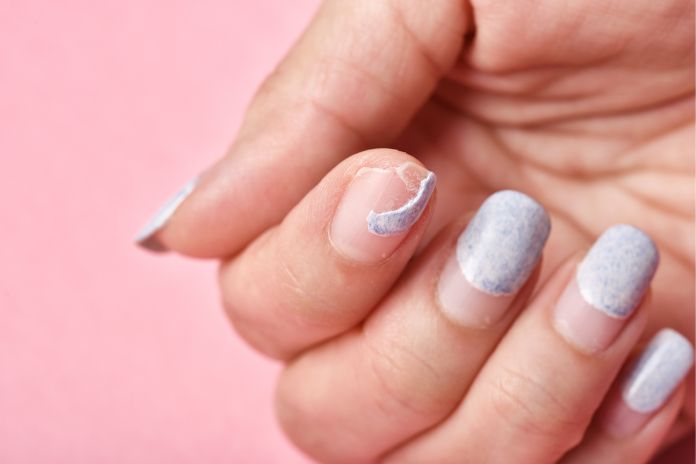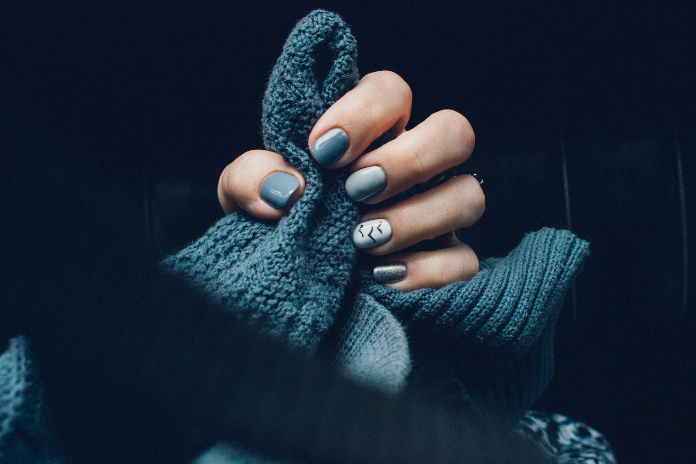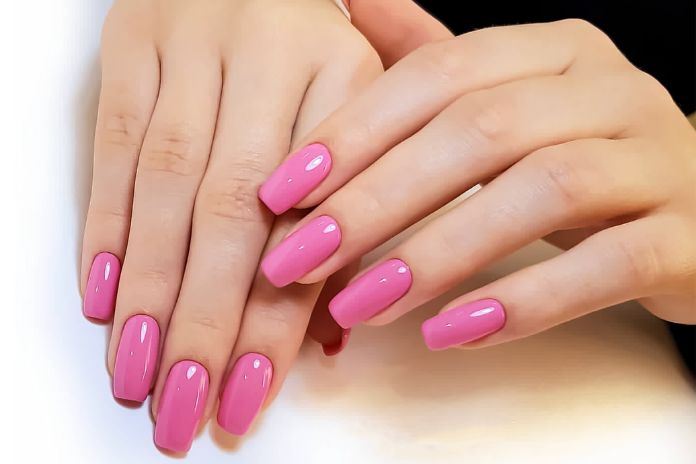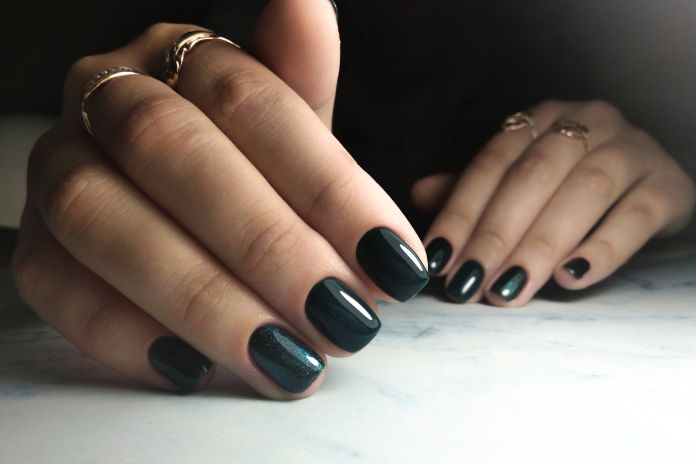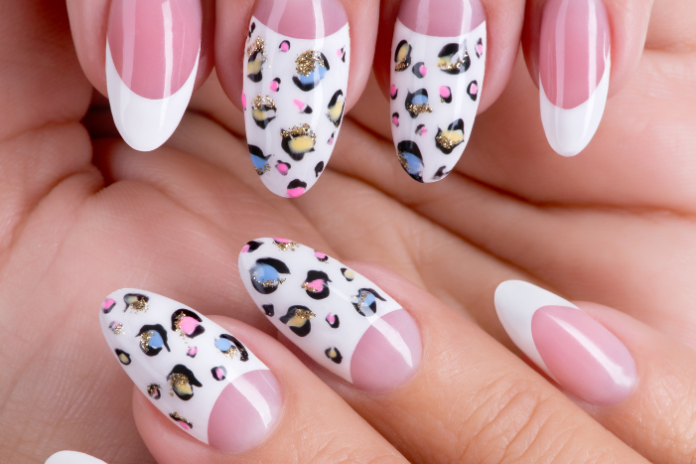Why Do Acrylic Nails Lift? Understanding the Causes
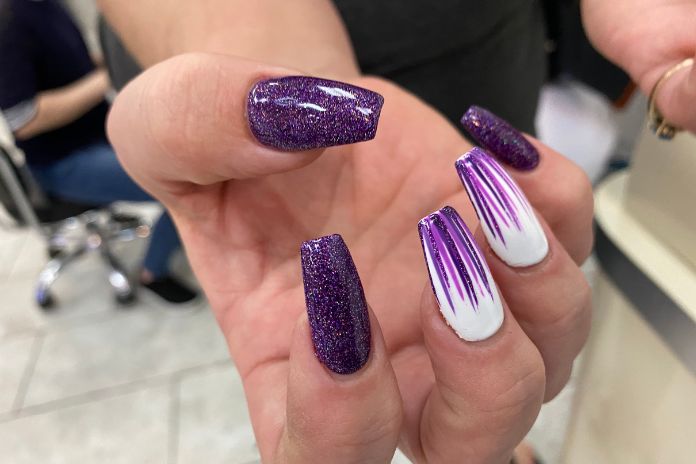
Acrylic nails have become increasingly popular in recent years as a way to achieve long, durable, and beautiful nails. However, one of the biggest problems that people face with acrylic nails is that they tend to lift. This can be frustrating and even painful, especially if the lifted nail catches on something and tears off. So, why do acrylic nails lift, and what can be done to prevent it?
There are several reasons why acrylic nails may lift. One of the most common reasons is improper application. If the technician does not properly prep the natural nail, apply the acrylic correctly, or use the correct ratio of liquid to powder, the nails are more likely to lift. In addition, using low-quality products or not properly maintaining the nails can also lead to lifting.
Fortunately, there are steps that can be taken to prevent acrylic nails from lifting. Some of these include properly preparing the natural nail, using high-quality products, and properly maintaining the nails. By taking these steps, it is possible to enjoy beautiful, long-lasting acrylic nails without the frustration and pain of lifting.
Contents
- 1 What are Acrylic Nails?
- 2 Why Do Acrylic Nails Lift?
- 3 Improper Prep
- 4 Harsh Environment
- 5 Low-Quality Products
- 6 Weight
- 7 Nail Technician Error
- 8 Application
- 9 Maintenance
- 10 Frequently Asked Questions
- 10.1 How to prevent acrylic nails from lifting?
- 10.2 What causes acrylic nails to lift?
- 10.3 How long do acrylic nails last before lifting?
- 10.4 Can improper application cause acrylic nails to lift?
- 10.5 How to fix acrylic nails that are lifting?
- 10.6 What are the best practices to avoid acrylic nails lifting?
What are Acrylic Nails?
Acrylic nails are one of the most popular types of artificial nails. They are made by combining a liquid and a powder that hardens when exposed to air. This mixture is applied to the natural nail and shaped to create a desired look. Acrylic nails are known for their durability and long-lasting nature, making them a popular choice for those who want to maintain a perfect manicure for an extended period.
Acrylic nails come in various shapes and sizes, and they can be customized according to your preferences. They can be long, short, square, oval, or any other shape you desire. They can also be painted in any color or decorated with nail art to add a unique touch to your look.
One of the benefits of acrylic nails is that they can be easily removed without damaging the natural nail. This is done by soaking the nails in acetone, which dissolves the acrylic and allows it to be gently removed. However, it is important to note that acrylic nails should only be removed by a professional nail technician to avoid any damage to the natural nail.
Overall, acrylic nails are a popular choice for those who want to maintain a perfect manicure for an extended period. They are durable, customizable, and easy to remove. However, it is important to understand the proper application and maintenance of acrylic nails to avoid any issues such as lifting or damage to the natural nail.
Why Do Acrylic Nails Lift?
Acrylic nails are a popular choice for many people who want to enhance the appearance of their nails. However, one of the most common problems with acrylic nails is that they tend to lift. There are several reasons why acrylic nails can lift, including improper prep, harsh environment, low-quality products, weight, and nail technician error. In this section, we will explore each of these factors in more detail.
Improper Prep
One of the most common reasons why acrylic nails lift is improper preparation of the nail bed. If the natural nail is not properly prepped, the acrylic will not adhere properly, and the nails will lift. This can happen if the cuticles are not pushed back or if the nail bed is not cleaned properly. It is essential to remove any oils or debris from the nail bed before applying acrylic nails. Using a dehydrator or primer can also help ensure that the acrylic adheres correctly.
Harsh Environment
Another factor that can cause acrylic nails to lift is exposure to a harsh environment. For example, if you frequently expose your nails to hot water or harsh chemicals, such as cleaning products or acetone, this can weaken the bond between the acrylic and the natural nail. It is essential to wear gloves when you are doing household chores or using harsh chemicals to protect your nails.
Low-Quality Products
Using low-quality acrylic products can also cause acrylic nails to lift. If the acrylic is not of high quality, it may not adhere correctly to the natural nail. It is essential to use high-quality products to ensure that your acrylic nails last longer and do not lift.
Weight
The weight of the acrylic nails can also cause them to lift. If the nails are too long or too thick, they can put too much pressure on the natural nail, causing it to lift. It is essential to ensure that the acrylic nails are not too heavy and that they are the right size for your natural nails.
Nail Technician Error
Finally, nail technician error can also cause acrylic nails to lift. If the nail technician is untrained or inexperienced, they may not apply the acrylic correctly, causing it to lift. It is essential to ensure that you go to a reputable nail technician who has experience in applying acrylic nails.
In conclusion, there are several reasons why acrylic nails can lift, including improper prep, exposure to a harsh environment, low-quality products, weight, and nail technician error. By taking steps to prevent lifting, such as using high-quality products, protecting your nails from harsh environments, and going to a reputable nail technician, you can ensure that your acrylic nails last longer and look great.
Improper Prep
One of the main reasons why acrylic nails tend to lift is due to improper preparation at the time the nails are applied. Even the best primers cannot adhere the acrylic to the natural nail plate if the preparation is not correct or sufficient. Here are some of the things to watch out for:
- Natural Oils – must be removed from the nail bed before applying acrylics. Natural oils can prevent the primer from adhering to the nail plate, which can cause lifting. Use a dehydrator to remove natural oils from the nail bed before applying the primer.
- Cuticle – must be pushed back and removed before applying acrylics. If the cuticle is not removed, it can trap air between the natural nail and acrylic, causing lifting. Use a cuticle pusher to push back the cuticle, and then use a nipper to remove the excess cuticle.
- Nail Bed – must be filed and cleaned properly before applying acrylics. If the nail bed is not filed and cleaned properly, it can cause lifting. Use a nail file to shape the nail, and then use a buffer to remove any shine from the nail bed.
- Primer – must be applied properly to ensure adhesion. If the primer is not applied properly, it can cause lifting. Apply the primer sparingly to the nail bed, making sure to cover the entire nail. Allow the primer to dry completely before applying the acrylic.
- Powder to Liquid Ratio – must be correct to ensure proper adhesion. If the powder to liquid ratio is incorrect, it can cause lifting. Follow the manufacturer’s instructions for the correct powder to liquid ratio.
By following these tips, you can ensure that your acrylic nails adhere properly and do not lift. Proper preparation is the key to long-lasting acrylic nails.
Harsh Environment
One of the main reasons why acrylic nails lift is due to exposure to harsh environments. This can include frequent exposure to hot water or moisture. When acrylic nails are exposed to hot water, they can become soft and pliable, which can cause them to lift or break off. Similarly, exposure to moisture can cause the acrylic nails to weaken and become more prone to lifting.
To prevent acrylic nails from lifting due to exposure to hot water, it is recommended to wear gloves when doing dishes or taking a shower. This can help to protect the nails from the hot water and prevent them from becoming soft and pliable. It is also important to avoid soaking the nails in water for extended periods of time, as this can cause the nails to become weakened and more prone to lifting.
In addition to hot water, exposure to moisture can also cause acrylic nails to lift. This can be especially problematic during humid weather or when engaging in activities that cause the hands to sweat. To prevent acrylic nails from lifting due to moisture, it is recommended to keep the hands dry and avoid activities that cause excessive sweating. Using a hand sanitizer that contains alcohol can also help to dry out the nails and prevent lifting.
Overall, exposure to harsh environments can be a major factor in causing acrylic nails to lift. By taking steps to protect the nails from hot water and moisture, it is possible to prevent lifting and keep the nails looking their best.
Low-Quality Products
One of the main reasons why acrylic nails lift is the use of low-quality products. People often choose these products because they are cheaper than high-quality ones, but they don’t last as long and don’t look as good. Using low-quality products can be a false economy because they can cause your nails to lift, which can lead to discomfort, damage, and the need for expensive repairs.
When it comes to acrylic nails, there are a few key products that you need to pay attention to. These include acrylic powder, liquid monomer, dehydrator, nail primer, and nail brushes. If you use low-quality versions of these products, your nails are more likely to lift.
For example, low-quality acrylic powder may not have the right consistency or adhesion, which can make it difficult to apply and lead to lifting. Similarly, low-quality liquid monomer may not have the right balance of ingredients, which can affect the curing process and lead to lifting.
In addition, using a low-quality dehydrator or nail primer can also contribute to lifting. These products are designed to prepare your nails for the acrylic application, and if they are not effective, your nails may not bond properly with the acrylic. Finally, using low-quality nail brushes can make it difficult to apply the acrylic precisely, which can also lead to lifting.
Overall, it’s important to invest in high-quality products when it comes to acrylic nails. While they may be more expensive upfront, they will last longer and look better, which can save you money and hassle in the long run.
Weight
The weight of acrylic nails can lead to lifting if the acrylic is too thick or too heavy for the natural nail. The added weight can cause stress on the natural nail, leading to lifting, cracking, or breaking.
To prevent lifting due to weight, it is important to use the correct ratio of acrylic powder to liquid and to apply the acrylic in thin layers. Thick layers of acrylic can increase the weight and cause lifting. It is also important to avoid using too many nail tips, as this can add unnecessary weight to the nails.
Additionally, it is important to consider the lifestyle of the individual when applying acrylic nails. Activities such as typing, cleaning, or playing sports can put additional stress on the nails, leading to lifting. It is important to communicate with the client and recommend a length and shape that will work for their lifestyle.
Overall, weight is an important factor to consider when applying acrylic nails. By using the correct ratio of acrylic powder to liquid, applying the acrylic in thin layers, and considering the lifestyle of the individual, lifting due to weight can be prevented.
Nail Technician Error
Nail technician error is one of the most common reasons why acrylic nails lift. An untrained nail technician or manicurist can make mistakes during the application or maintenance of acrylics that can lead to lifted acrylic nails, gaps, peeling, and other issues.
Application
During the application process, a nail technician must ensure that the natural nails are properly prepped and cleaned before applying the acrylics. Failure to do so can result in lifted acrylic nails or gaps. Additionally, the nail technician must use the correct ratio of powder to liquid to ensure that the acrylics adhere properly to the natural nails. Using an incorrect powder to liquid ratio can cause the acrylics to lift or peel.
Another common mistake made by nail technicians is improper use of primers and nail glue. Overusing or underusing primers can cause the acrylics to lift, while using too much nail glue can cause the acrylics to become too thick, leading to lifting and peeling.
Maintenance
Proper maintenance of acrylic nails is just as important as the application process. Nail technicians must ensure that clients return for regular fills to prevent lifted acrylic nails. Failure to do so can cause the acrylics to lift away from the natural nails, leaving gaps that can harbor bacteria and cause infections.
Additionally, nail technicians must be aware of any medications their clients are taking that can affect the acrylics. Certain medications can cause the acrylics to lift or peel, so it is important for the nail technician to adjust the application and maintenance process accordingly.
Stress can also play a role in lifted acrylic nails. Nail technicians should advise their clients to avoid activities that can put stress on the nails, such as using them as tools or typing for extended periods of time.
In summary, nail technician error is a common reason why acrylic nails lift. Proper application and maintenance, including prepping the natural nails, using the correct ratio of powder to liquid, and regular fills, can help prevent lifted acrylic nails. Nail technicians should also be aware of any medications their clients are taking and advise them to avoid activities that can put stress on the nails.
Application
The application of acrylic nails is a crucial step that can determine the longevity of the nails. Applying acrylic nails requires skill and precision, and any mistakes can lead to lifting. Here are some factors to consider during the application process:
-
Powder to liquid ratio: The powder to liquid ratio is essential in creating the perfect acrylic mixture. An incorrect ratio can cause the acrylic to be too thick or too thin, leading to lifting. It’s recommended to follow the manufacturer’s instructions and use a scale to measure the powder and liquid accurately.
-
Nail preparation: Proper nail preparation is crucial to prevent lifting. The natural nail should be cleaned, buffed, and dehydrated to remove any oils or debris. Failure to do so can cause the acrylic to lift from the nail bed.
-
Acrylic application: The acrylic should be applied in thin layers to prevent air bubbles and ensure proper adhesion. Thick layers can cause lifting, and the acrylic should be applied evenly to prevent any lumps or bumps.
-
Curing time: The curing time of the acrylic is essential to prevent lifting. The acrylic should be allowed to dry completely before filing or shaping. Failure to do so can cause the acrylic to lift or crack.
-
Maintenance: Proper maintenance is crucial to prevent lifting. The nails should be kept dry and clean, and any lifting should be addressed immediately. Regular fills should be scheduled every two to three weeks to maintain the integrity of the acrylic nails.
By following these tips and ensuring proper application, you can prevent lifting and enjoy beautiful, long-lasting acrylic nails.
Maintenance
Maintaining acrylic nails is crucial to prevent lifting and ensure they last as long as possible. Here are some tips for proper maintenance:
- Regular Fill-Ins: As your natural nails grow, the acrylics will start to lift away from the nail bed. Fill-ins every two to three weeks will help keep the acrylics in place and prevent lifting.
- Proper Nail Preparation: Before applying acrylics, it’s essential to prep your nails properly. This includes cleaning and filing your nails to remove any oils or debris that could prevent the acrylics from adhering correctly.
- Use a Dehydrator: Using a dehydrator before applying acrylics can help remove any remaining oils or moisture from your nails. This step will help the acrylics adhere better and prevent lifting.
- Apply a Top Coat: Applying a top coat to your acrylic nails can help protect them from chipping and lifting. Be sure to apply a top coat every few days to keep your nails looking their best.
- Regular Maintenance: In addition to fill-ins, regular maintenance is essential to keep your acrylic nails in good condition. This includes avoiding activities that could damage your nails, such as opening cans or using your nails as tools.
By following these tips for proper maintenance, you can help prevent acrylic nails from lifting and ensure they look their best for as long as possible.
Frequently Asked Questions
How to prevent acrylic nails from lifting?
There are several things you can do to prevent acrylic nails from lifting. First, make sure your natural nails are clean and dry before applying the acrylic. Next, ensure that your nail technician applies the acrylic evenly and completely, without any gaps or voids. Additionally, make sure your nail technician uses a nail primer or dehydrator before applying the acrylic. Finally, avoid getting your nails wet for at least 24 hours after application, as this can cause the acrylic to lift.
What causes acrylic nails to lift?
Acrylic nails can lift for several reasons, including poor application, incorrect powder-to-liquid ratio, using low-quality products, and not prepping the nails properly. Other factors that can cause acrylic nails to lift include short or weak natural nails, improper positioning of the acrylic nails, and getting in contact with acetone.
How long do acrylic nails last before lifting?
The duration that acrylic nails last before lifting can vary depending on several factors, including how well they were applied, the quality of the products used, and how well they are maintained. Generally, acrylic nails can last anywhere from two to four weeks before they begin to lift.
Can improper application cause acrylic nails to lift?
Yes, improper application can cause acrylic nails to lift. If the acrylic is not applied evenly and completely, there may be gaps or voids in the product, which can cause lifting. Additionally, if the nail technician over-files the nails or fails to prepare the nails properly in advance, this can also cause the acrylic nails to lift.
How to fix acrylic nails that are lifting?
If your acrylic nails are lifting, there are a few things you can do to fix them. First, you can try to gently file down the lifted area and apply a small amount of acrylic to fill in the gap. Alternatively, you can remove the acrylic nails entirely and start over with a new set.
What are the best practices to avoid acrylic nails lifting?
The best practices to avoid acrylic nails lifting include prepping the nails properly, using high-quality products, applying the acrylic evenly and completely, and using a nail primer or dehydrator before application. Additionally, avoid getting your nails wet for at least 24 hours after application, and be sure to maintain your acrylic nails properly by keeping them clean and dry and avoiding harsh chemicals.
